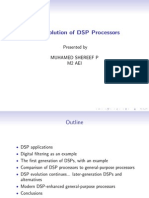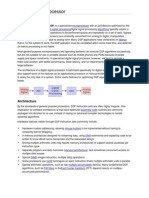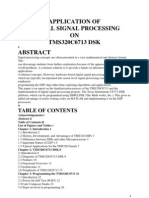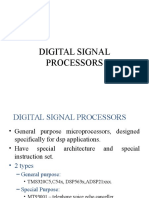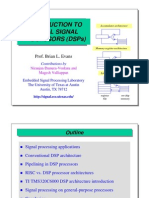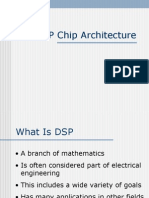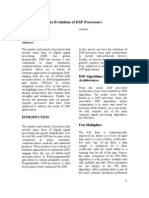0% found this document useful (0 votes)
28 views3 pagesDSP vs Microprocessor Explained
A DSP processor is specialized for digital signal processing tasks like filtering and convolution using parallelism and optimized instructions. A normal microprocessor is designed for general computing tasks. DSP processors have specialized memory architectures and instruction sets tailored for signal processing. They are commonly used in applications like audio processing, video compression, and speech recognition.
Uploaded by
Aye BihariCopyright
© © All Rights Reserved
We take content rights seriously. If you suspect this is your content, claim it here.
Available Formats
Download as PDF, TXT or read online on Scribd
0% found this document useful (0 votes)
28 views3 pagesDSP vs Microprocessor Explained
A DSP processor is specialized for digital signal processing tasks like filtering and convolution using parallelism and optimized instructions. A normal microprocessor is designed for general computing tasks. DSP processors have specialized memory architectures and instruction sets tailored for signal processing. They are commonly used in applications like audio processing, video compression, and speech recognition.
Uploaded by
Aye BihariCopyright
© © All Rights Reserved
We take content rights seriously. If you suspect this is your content, claim it here.
Available Formats
Download as PDF, TXT or read online on Scribd
/ 3


